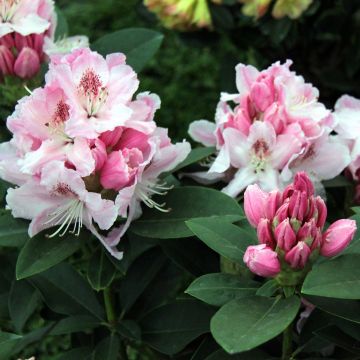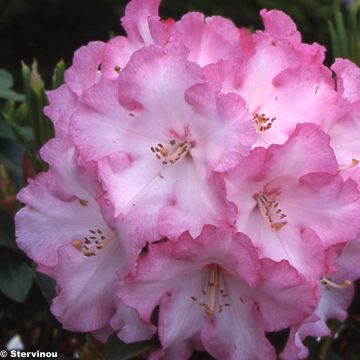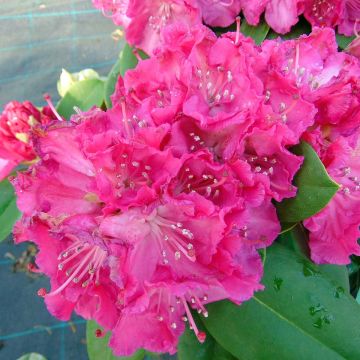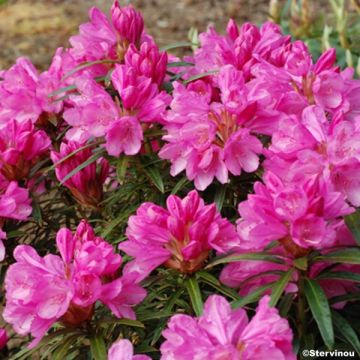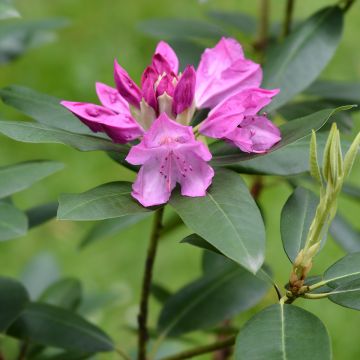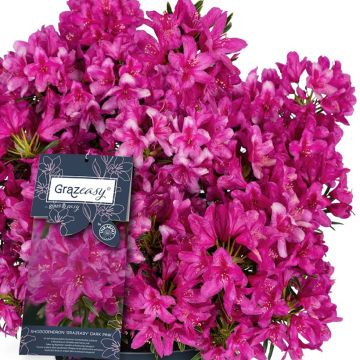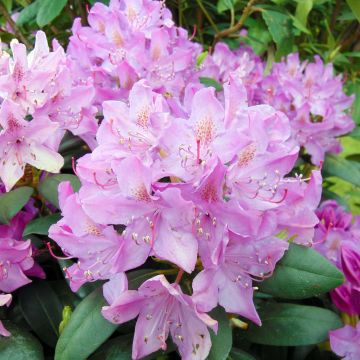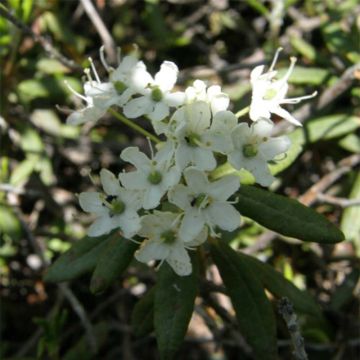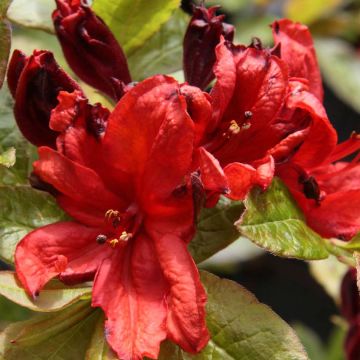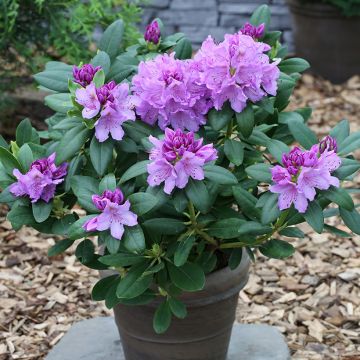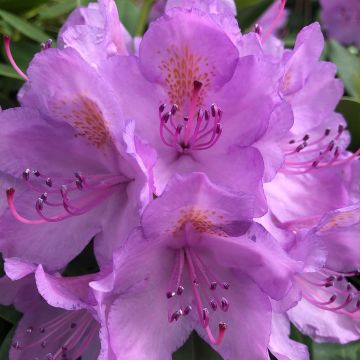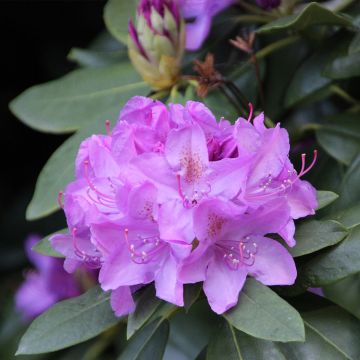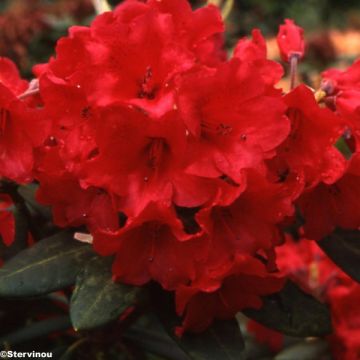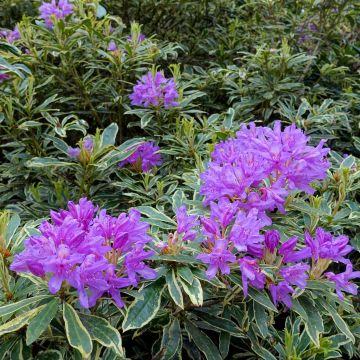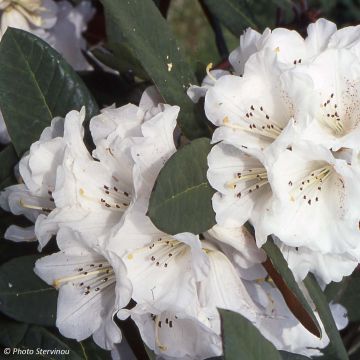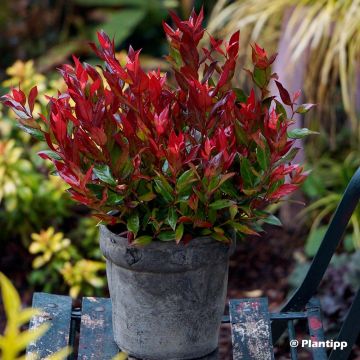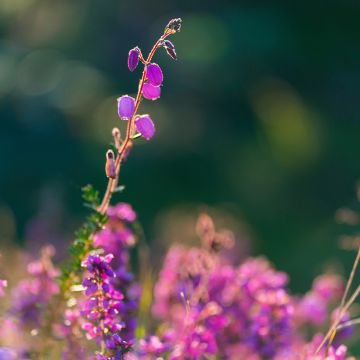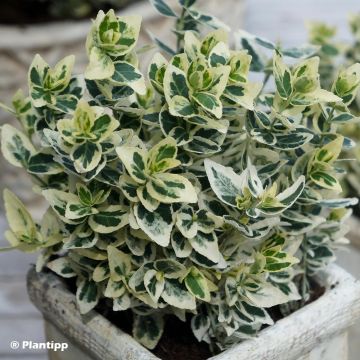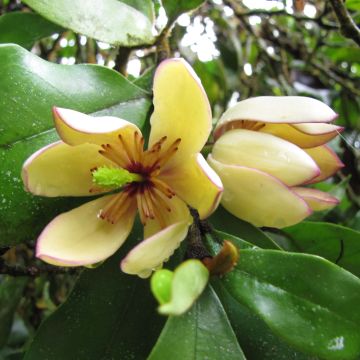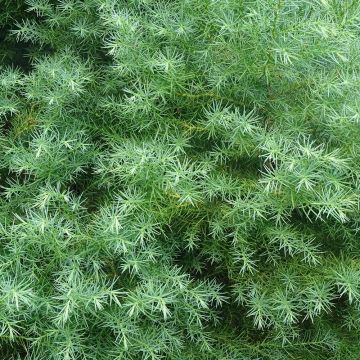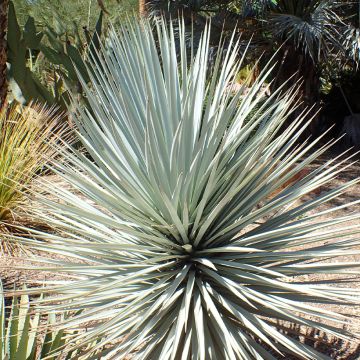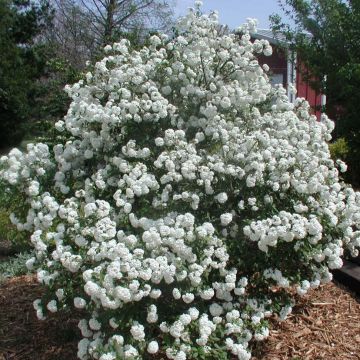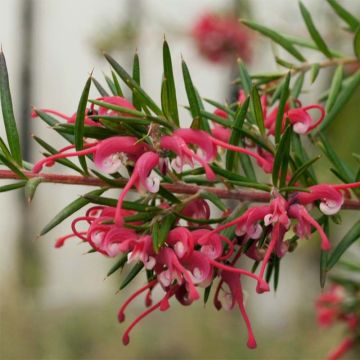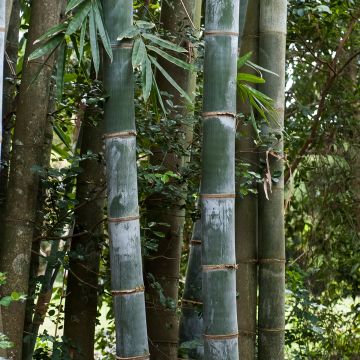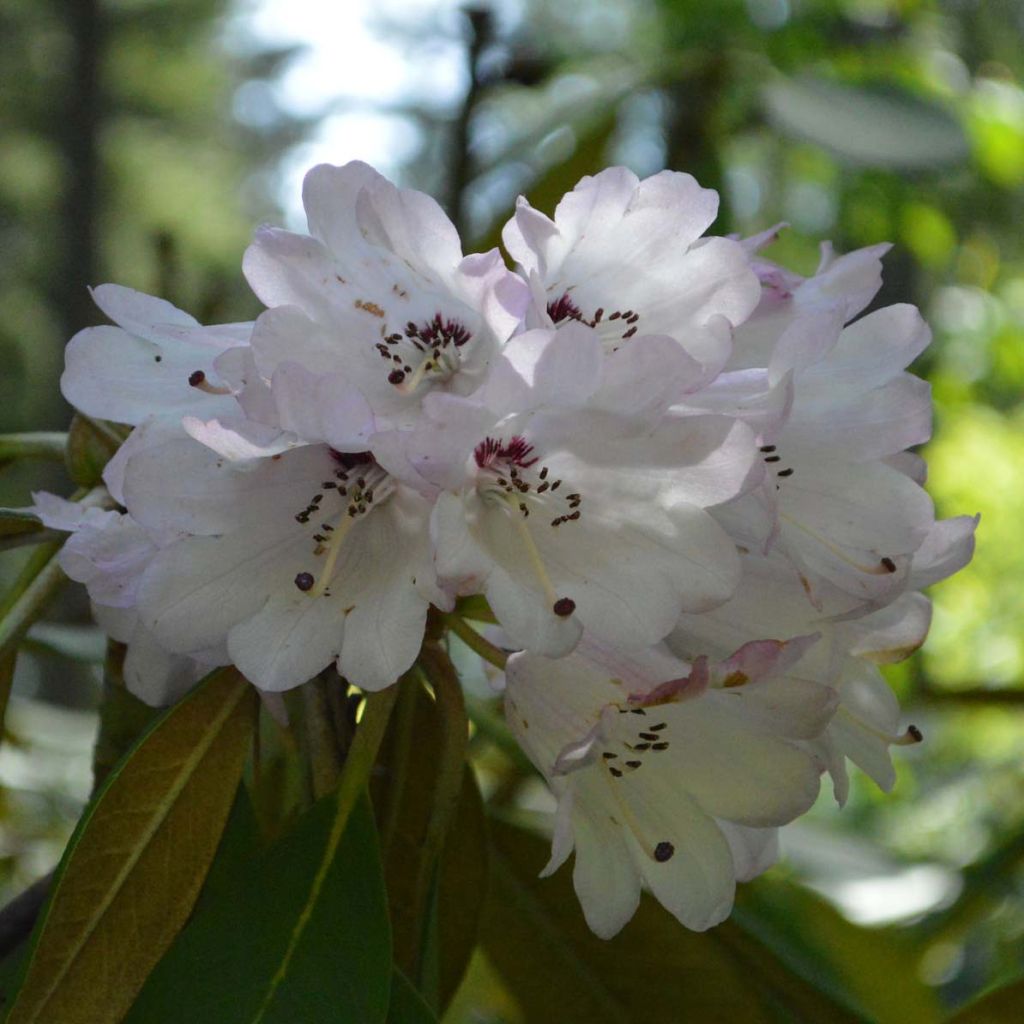

Rhododendron rex - Grand rhododendron
Rhododendron rex
Rhododendron rex
King Rhododendron
Leaf" "mouldy" overall, a cut stem broken and mouldy, leaves with signs of necrosis... I replanted, took a photo. To be seen for recovery in spring?
Jean Marie M., 08/09/2018
Why not try an alternative variety in stock?
View all →This plant carries a 24 months recovery warranty
More information
We guarantee the quality of our plants for a full growing cycle, and will replace at our expense any plant that fails to recover under normal climatic and planting conditions.
From €5.90 for pickup delivery and €6.90 for home delivery
Express home delivery from €8.90.
Does this plant fit my garden?
Set up your Plantfit profile →
Description
Rhododendron rex is an exceptional plant, a true star of the shade in spring. This vigorous Chinese species stands out for the size of its vegetation, the beauty of its foliage, and its bountiful delicately coloured spring flowering. If the conditions are met, in humus-rich and acidic soil, with some protective shade and under a mild and humid climate, it will form a true small tree that will be appreciated throughout the year. Its silvery young shoots are surrounded by very large velvety chamois leaves and serve as a setting for large inflorescences laden with white flowers slightly tinged with pink and delicately speckled with crimson-purple. Quite simply a wonder!
Rhododendrons belong to the family of Ericaceae, just like heathers. They are divided into 'sections', grouping certain botanical characteristics and cultural requirements. Rhododendron rex, cultivated since 1913, is classified in the subgenus Hymenanthes, section Pontica, and subsection Falconera.
Rhododendron rex exists in three forms, three subspecies distinguished by the size of the leaves as well as the colour and persistence of the indumentum, a kind of velvety coating present on the undersides of the leaves. It is a species native to China, specifically from pine forests located at high altitudes (between 2300 and 4000 m (7546 and 13123 ft)) in the southwest of Sichuan, southeast of Xizang, north and west of Yunnan, as well as northeast of Myanmar in Burma.
This Rhododendron is quite bushy, taller than it is wide. In favourable climates, it reaches maturity about 2.50 m (8 ft) tall and 2 m (7 ft) wide (5 to 7 m (16 to 23 ft) tall in the wild). It is a rather slow-growing plant, but very vigorous and hardy up to -15°C (5°F) when mature. The branches, solidly structured, are covered with oversized evergreen foliage, oval-shaped, thick, and leathery. Some leaves can reach up to 50 cm (20 in) in length. On average, they will measure 20 to 30 cm (8 to 12 in) in length. They emerge covered with a silvery fuzz and surrounded by purplish leaf bracts. The mature leaves have a satin-like, smooth upper surface, green-blue in colour, and a velvety chamois underside tinged with rust. In April-May, its spectacular flowering begins with the appearance of large clusters of scaly buds tinged with bright pink. These inflorescences are corymbs that bear 15 to 25 large flowers. The pink buds open into almost white flowers, delicately shaded with pink, speckled with very dark purple, and marked with crimson in the throat. The flower's throat also hosts beautiful stamens with dark anthers.
Rhododendron rex, a sumptuous shrub of ericaceous soil, will find its place in shade or partial shade in a moist, humus-rich, and well-drained soil with an acidic pH. While it is hardy, it will only reach its full potential in a humid and moist climate, far from the scorching sun. It can be used as a solitary plant, in a hedge, or in a large shrub bed, especially with other ericaceous plants. It can be paired with Chinese azaleas, with their pastel flowers complementing their warm tones perfectly, magnolias, andromedas (Pieris), mountain laurels (Kalmia), Japanese maples with yellow, green, or purple foliage... It can also be tried in a very large container on the terrace, still in partial shade and in a sheltered position from cold and dry winds, taking care to provide it with fertilizer and rainwater (or lime-free water) for watering.
Rhododendron rex in pictures
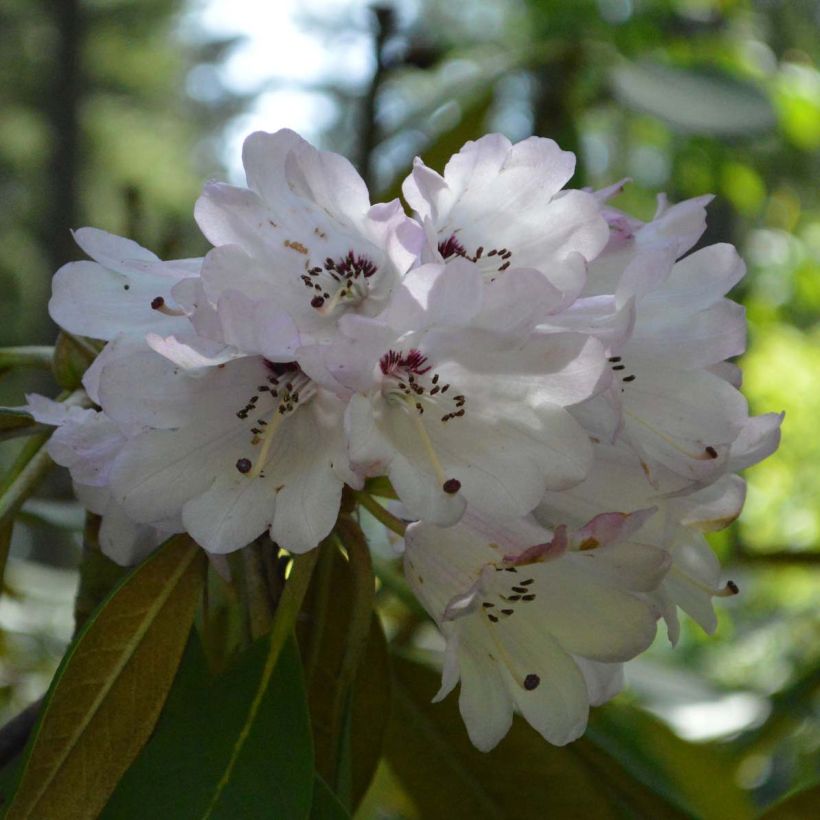

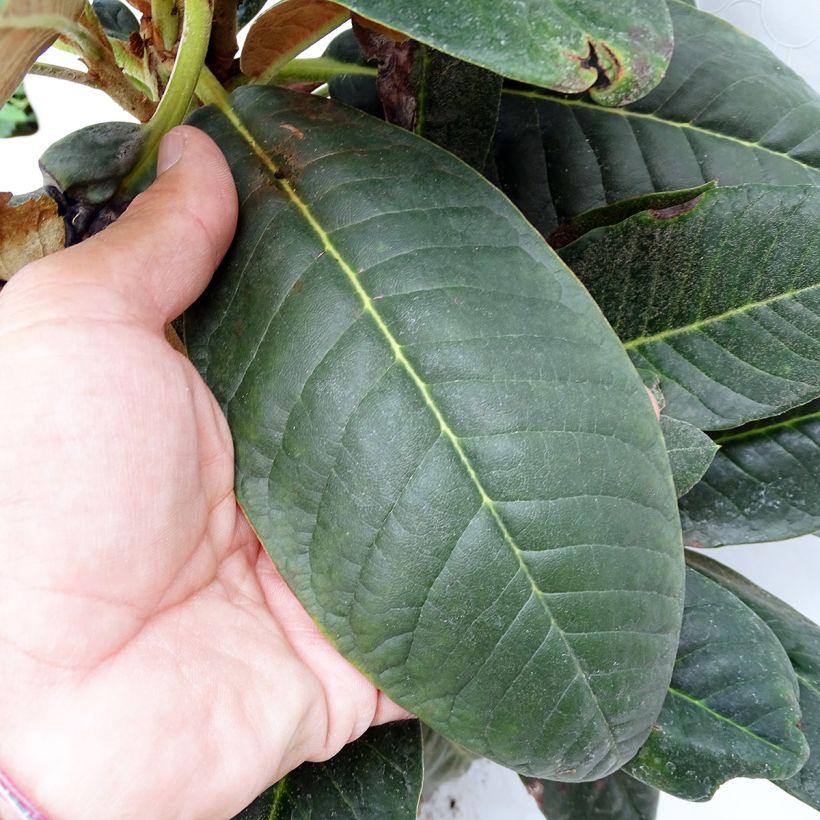

Plant habit
Flowering
Foliage
Botanical data
Rhododendron
rex
Ericaceae
King Rhododendron
China
Other Large Rhododendrons
Planting and care
Plant the Rhododendron rex in a shady or semi-shady position, without scorching sunlight, protected from cold and drying winds, in a moist, humus-rich, and light soil, with a tendency towards acidity. Like all plants in the heather family, it does not tolerate chalky soils or heavy soils saturated with water in winter. Dig a hole three times larger than the pot. Soak the root ball in non-chalky water and plant the bush at the level of the collar, in a mixture composed of leaf compost, gravel or pumice, and loam. Water generously and keep the soil moist in summer. Azaleas and Rhododendrons have a shallow root system. As a result, they are as vulnerable to long periods of drought as they are to waterlogged soils. That is why it is recommended to enrich the soil with humus and water abundantly (with non-chalky water) during dry periods. Moreover, this root system is not very strong, which is why it is essential to lighten heavy soils with draining materials (gravel, pumice, clay pellets, compost) when planting. Apply a mulch of crushed pine bark around the base of the bush every spring to maintain soil moisture while preserving an acidic pH. Maintenance consists of removing faded flowers in summer and also removing dead branches.
Azaleas and Rhododendrons can sometimes be attacked by weevils that eat the edges of leaves and rootlets, as well as the famous "rhododendron beetle," which does not usually cause significant damage. Yellowing of leaves (chlorosis) in Rhododendron indicates poor assimilation of iron from the soil and can lead to premature death of the plant. While limestone is often the cause, poorly drained soil or a deeply planted root ball can also explain the phenomenon.
Planting period
Intended location
Care
-
, onOrder confirmed
Reply from on Promesse de fleurs
Evergreen shrubs
Haven't found what you were looking for?
Hardiness is the lowest winter temperature a plant can endure without suffering serious damage or even dying. However, hardiness is affected by location (a sheltered area, such as a patio), protection (winter cover) and soil type (hardiness is improved by well-drained soil).

Photo Sharing Terms & Conditions
In order to encourage gardeners to interact and share their experiences, Promesse de fleurs offers various media enabling content to be uploaded onto its Site - in particular via the ‘Photo sharing’ module.
The User agrees to refrain from:
- Posting any content that is illegal, prejudicial, insulting, racist, inciteful to hatred, revisionist, contrary to public decency, that infringes on privacy or on the privacy rights of third parties, in particular the publicity rights of persons and goods, intellectual property rights, or the right to privacy.
- Submitting content on behalf of a third party;
- Impersonate the identity of a third party and/or publish any personal information about a third party;
In general, the User undertakes to refrain from any unethical behaviour.
All Content (in particular text, comments, files, images, photos, videos, creative works, etc.), which may be subject to property or intellectual property rights, image or other private rights, shall remain the property of the User, subject to the limited rights granted by the terms of the licence granted by Promesse de fleurs as stated below. Users are at liberty to publish or not to publish such Content on the Site, notably via the ‘Photo Sharing’ facility, and accept that this Content shall be made public and freely accessible, notably on the Internet.
Users further acknowledge, undertake to have ,and guarantee that they hold all necessary rights and permissions to publish such material on the Site, in particular with regard to the legislation in force pertaining to any privacy, property, intellectual property, image, or contractual rights, or rights of any other nature. By publishing such Content on the Site, Users acknowledge accepting full liability as publishers of the Content within the meaning of the law, and grant Promesse de fleurs, free of charge, an inclusive, worldwide licence for the said Content for the entire duration of its publication, including all reproduction, representation, up/downloading, displaying, performing, transmission, and storage rights.
Users also grant permission for their name to be linked to the Content and accept that this link may not always be made available.
By engaging in posting material, Users consent to their Content becoming automatically accessible on the Internet, in particular on other sites and/or blogs and/or web pages of the Promesse de fleurs site, including in particular social pages and the Promesse de fleurs catalogue.
Users may secure the removal of entrusted content free of charge by issuing a simple request via our contact form.

































